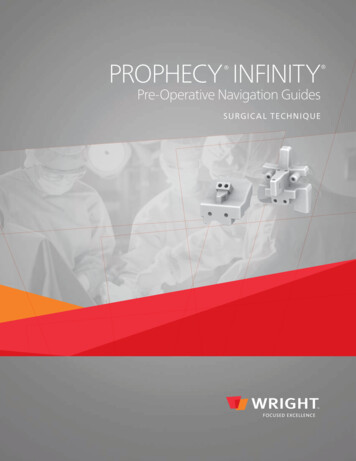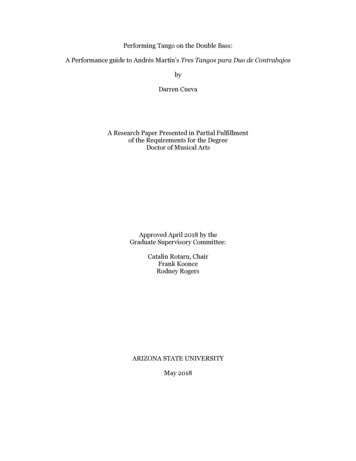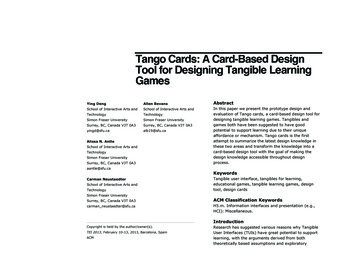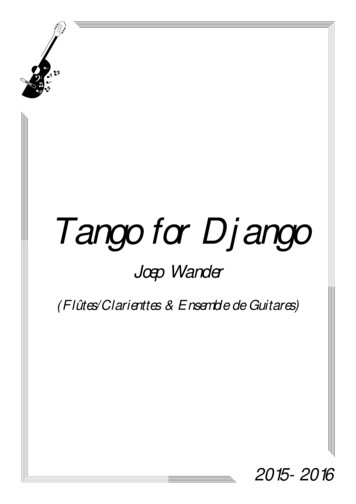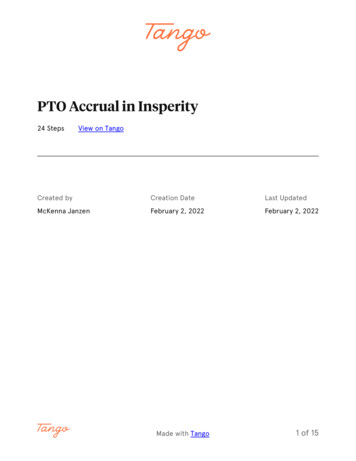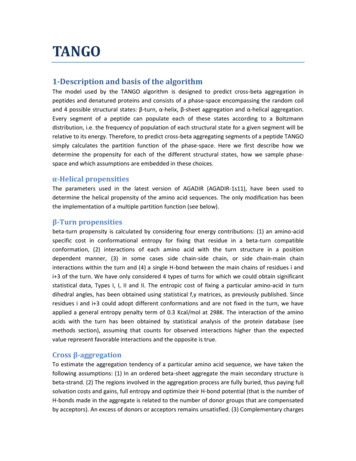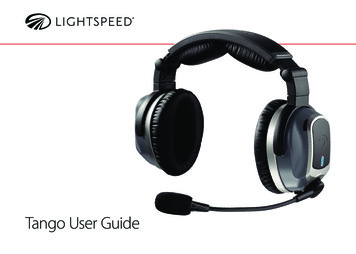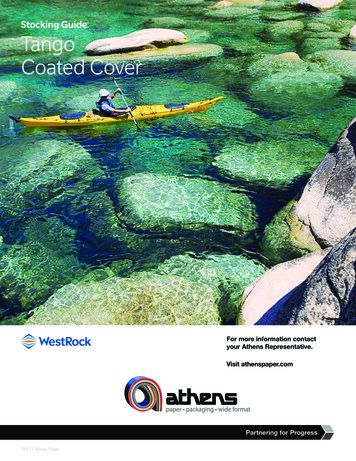
Transcription
Nexgear TangoAnkle JointStrong. Dynamic. Modular.Information for specialist dealers
Foreword“ One of the things users with neuroorthopaedicclinical pictures want is to compensate for theaffected musculature to a significant extent. Basedon this, the Nexgear Tango aims to make standingand walking as natural and safe as possible whileconserving the user’s energy – whether on levelsurfaces or when negotiating areas such as inclinesor stairs. The Tango ankle joint is a major step in thisdirection for users who find that insufficient lower legmusculature is one of their main problems.”Heiko Drewitz, Certified Prosthetist/Orthotist (CPO)The joint system enables a variablerange of motion in the upper ankle andhighly customised adjustment of theresistances for plantar flexion anddorsal extension. In addition to thenoticeably dynamic end of the terminalstance phase/pre-swing phase, theuser also benefits from a very smoothtransition from the flexing to theextending action of the knee moment.The upper ankle joint motion of up to20 dorsal extension offers tremendousrelief compared to other orthosis systems, particularly when walking uphill,and results in a nearly physiologicalload on the knee joint here as well.Nexgear Tango Ottobock3
New fitting optionswith NexgearThe premium Nexgear system joint rangeoffers new fitting options for AFOs andKAFOs. Our goal is to combine the latesttechnologies and materials with a moderndesign and some 30 years of developmentexperience. This results in sophisticatedfitting solutions that increase the mobilityof people with paralysis or partial paralysis of the leg muscles.In future, the Nexgear range will include compatible ankle and knee joints. These can be combined tomeet the individual needs of users.IndicationsPartial or total paralysis of the leg muscles, mainly incase of neurological diseases such as: Incomplete spinal cord injury (ISC) Traumatic brain injury Infantile cerebral palsy StrokeIndications must be determined by the physician.4Ottobock Nexgear Tango
Tango – one joint, many possibilitiesThe Tango ankle joint is the first product in ourNexgear range. This modular system with ahigh level of energy return offers the necessarydynamics for a more efficient and physiologicalgait. Three different modules enable a high level offlexibility in functionality and design and can beadded or removed at any time. This allowsyou to adapt the joint as closely as possible to auser’s individual needs throughout the entirerehabilitation process.The highly functional Reaction-module usesground reaction forces to influence the knee andankle joint. Plantar flexion and dorsiflexion can becontrolled dynamically. The knee joint is alsosupported in the stance phase. The module’sdifferent Reaction-Springs allow the requiredenergy return to be optimised on an individualbasis. In addition, the Tango ensures the largestpossible range of motion in the ankle, even withhigh spring force. This results in a more dynamicand physiological gait pattern.Benefits at a glanceD ouble action ankle joint with three functionmodules (Stop-module, Spring-module,Reaction-module) enables an ideal adaptationto the needs of the user in terms of functionand designI ndividual adaptation throughout the entirerehabilitation process thanks to modules thatcan be added and removedR eaction-module:–– High level of energy return with maximumfreedom of movement in the ankle–– Dynamic control of plantar flexion anddorsiflexion, support for knee extension inthe mid-stance phase and support duringtoe-off/initiation of the swing phase–– Separate static and dynamic settings–– Dynamic adjustment thanks to continuouslyvariable preload–– Two Reaction-Springs in the strong and extrastrong versionsF or adults and children, selected by weightclassificationF or unilateral and bilateral fittingsB ase body available in titanium and steelSuitable muscle statusfor Nexgear T
for Nexgear Tango Tango - one joint, many possibilities The Tango ankle joint is the first product in our Nexgear range. This modular system with a high level of energy return offers the necessary dynamics for a more efficient and physiological gait. Three different modules enable a high level of flexibility in functionality and design and can be

